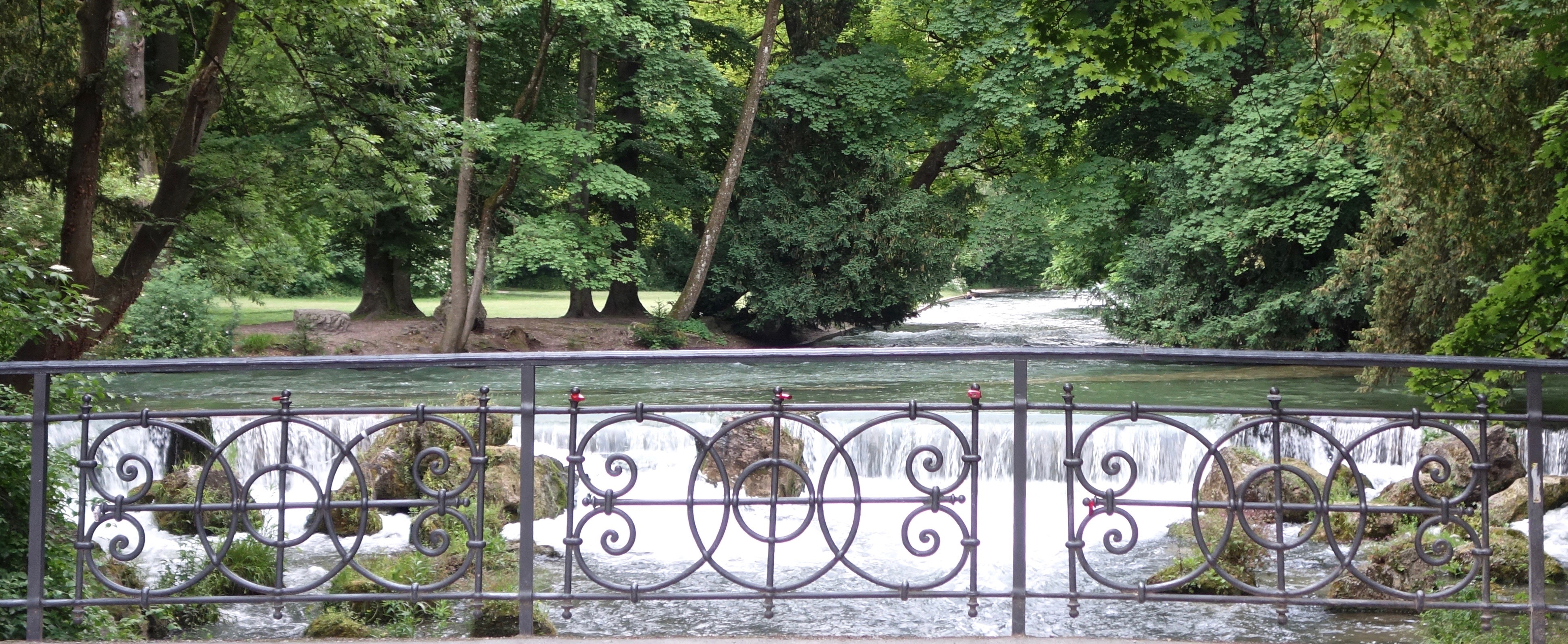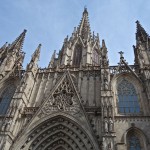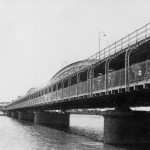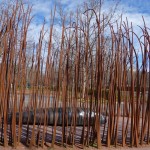If I were young and in love I might be tempted to engrave my name and his on a padlock and attach it to a beautiful bridge, casting the keys to an unreachable depth and thereby hopefully cementing the relationship. Now that I’m oldish I see these padlocks as akin to litter. Young lovers who attach the piece of not-easily-removable coloured metal see it through the rosy glow of their love. The decorative wrought iron of the bridge panels is little more than a place to hang their public bling. When I saw this and other footbridges in the Englischer Garten in Munich I felt an old woman’s frustration.

Later I despaired at the sight of a love-lock stand framed by a huge walk-through heart that was covered in them. Lovers could purchase padlocks for the specific purpose of attaching them to the narrow ironwork of a bridge and throwing the keys into the river below. Like a fast food outlet, the stand eliminated the need for forethought and preparation.
But not all pretty garden footbridges are made with decorative ironwork. In Albert on The Somme in northern France there’s a small public garden with a narrow stream, a waterfall and this bridge, where lovers would need to bring something pretty big and heavy to permanently attach it to the branch-sized bars.

The public garden in Albert is at the back of the Somme 1916 Museum where there is much to see regarding all the parties fighting in and around Albert in that year. Lots of grim reminders of war. The garden, by contrast, is a place of joy and peace.
Thanks WordPress for the Bridge prompt for this week’s photo challenge.
***





I share your pain with those padlocks, Trish. We even saw padlocks attached to other padlocks (rather than the railing) which made us wonder what happened if the original relationship dissolved! Incidentally, you are in a part of the world that I long to visit. G&P, Ken
With a lock attached to a lock, at least that’s one less to cut off.
G&P? I haven’t seen this before. What does it mean?